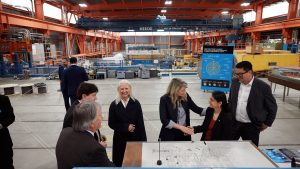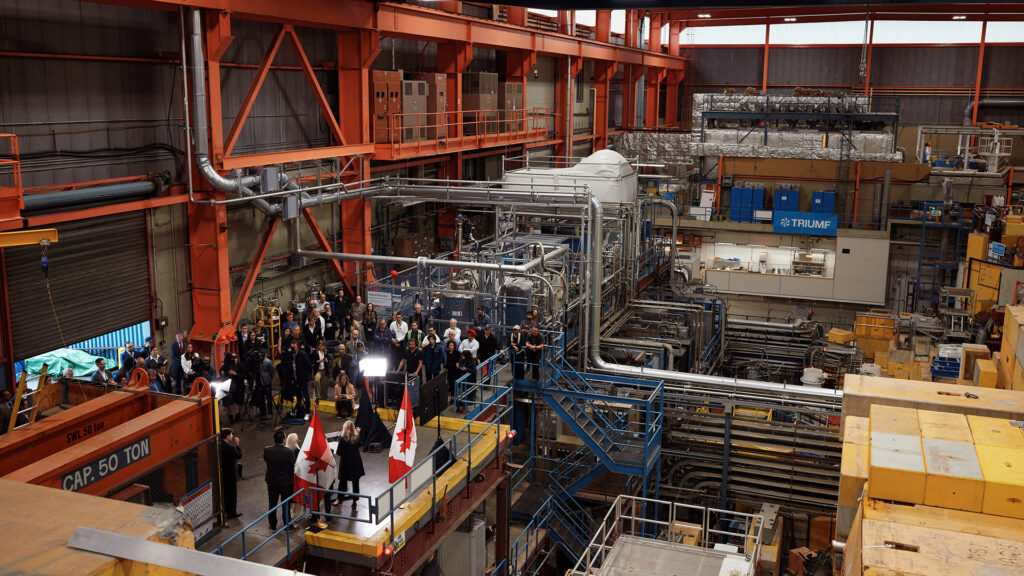TRIUMF, Canada’s particle accelerator centre, explains how Canada can rebuild its research infrastructure to become a world leader in research and innovation.
The world looks significantly different today than it did a year ago. Geopolitical loyalties are shifting, long-held norms are being rewritten, and countries around the world are rethinking how to secure their place in an increasingly unpredictable future.
New possibilities are hidden within this uncertainty. For Canada, this is an opportunity to show that we can not only be a trusted partner, but also a leader. But leadership requires making bold choices and making the most of the strategic advantages you already have.
Canada’s major research facilities
One of the most powerful of these advantages is the extensive research infrastructure, the country’s network of so-called “Major Research Facilities” (MRFs). These are not just science workhorses. They are engines of innovation, talent attraction, and platforms for mission-driven discoveries that generate benefits far beyond the lab. But too often they are treated as an afterthought. That is, they are given enough support to function, but rarely empowered to succeed.
For decades, Canadian MRFs have operated on a “minimum viable product” philosophy. Our funding and policy frameworks have sustained them, but not enhanced them. That attitude must change if we aspire to true global leadership in science and innovation. These facilities are not a burden. They are our most valuable players.

the need to be bold
Canada already has what it takes to succeed: world-class talent, excellent infrastructure and strong international relationships. However, current approaches to MRF are at a disadvantage. In a world where boldness is valued, hesitance, or a typical Canadian humility, risks making us invisible. Today, a patchwork of ownership, operating, and funding models limits the ability of our institutions to function as a national system. Despite the federal government’s role in sustaining them, there is no unified framework for coordinating its mission or expanding its impact. The result is decreased visibility and missed opportunities. While our peers use their laboratories as flagships of national power, Canadian laboratories are too often ignored.
The lack of a long-term roadmap only deepens the challenge. A grassroots, proposal-based approach to defining priorities may have worked well for small projects, but falls flat when applied to multibillion-dollar facilities with national potential. The result is a short-term system in which local interests compete with national goals and scale and strategy often take a back seat.
On the other hand, competition is not standing still. In Europe, Asia, and other regions, large-scale facilities are the basis of scientific and economic strength. These companies share common characteristics: a consistent organization, a clear mission, stable funding, and direct accountability at the highest levels. These facilities not only produce science, they foster resilience, attract global partnerships, and serve as undeniable evidence of national ambition.
A new approach to MRF
To seize this moment, Canada needs to rethink how it approaches MRFs. We must move away from viewing these as isolated facilities maintained at the lowest sustainable cost. Rather, we should recognize them as interconnected national assets: interdisciplinary, collaborative, and central to our long-term vision. Achieving this does not require major new investments. The most urgent steps are structural and institutional: establishing leadership and accountability at the national level, improving coordination, and integrating these facilities into Canada’s broader economic and innovation strategy.
Although we can draw inspiration from many successful models abroad, the essential task is simple. Canada must treat the MRF as a network, not a collection. When we work together and empower, we can have an impact on a scale that no single institution can achieve alone.

This is not just a science issue. It’s about Canada’s resilience, competitiveness and global voice. Strong, agile research and innovation facilities create jobs, train skilled talent and strengthen partnerships in a world where collaboration is currency. They project confidence in times of uncertainty: the quiet, steady confidence of a nation invested in its future.
But time is of the essence. A high level of management is required to ensure these facilities operate as the most valuable players they should be. Canada cannot afford to let outdated systems limit the potential of world-class assets, nor can we stand back while other countries take decisive action.
Our long-term success depends on strong partnerships abroad, and those partnerships begin with strength and consistency at home. By more effectively leveraging our extensive research infrastructure, we can have a greater impact on Canadians, deepen our role in global science, and secure our position as a leader in innovation and discovery.
The world is changing rapidly. Canada can and should change accordingly. The question is not whether we can lead, but whether we choose to lead. Now is the time to act.
This article will also be published in the quarterly magazine issue 24.
Source link

